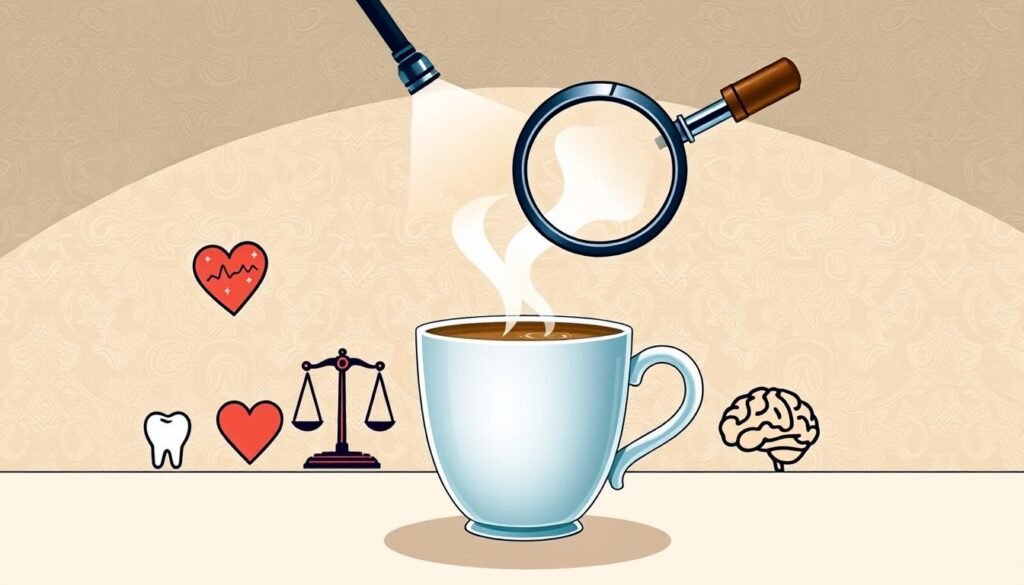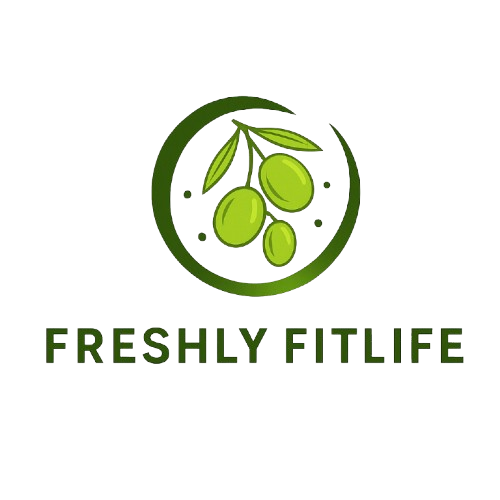Many coffee lovers enjoy a creamy cappuccino, but few consider its effects on their well-being. This espresso-based drink, topped with steamed milk and foam, offers more than just a caffeine boost. Studies suggest it may help reduce stroke risk and support digestion.
UCLA dietitian Dana Hunnes highlights coffee’s general advantages, like antioxidants that fight inflammation. A daily 180ml serving could lower bad cholesterol oxidation by 20%. Yet, preparation matters—skip the sugar to maximize benefits.
How does this frothy favorite compare to black coffee or lattes? Does the milk add value or hidden drawbacks? Let’s explore the science behind its impact on heart health, blood sugar, and energy levels.
Key Takeaways
- Cappuccino contains antioxidants that may reduce inflammation.
- Unsweetened versions help manage blood sugar levels.
- Steamed milk adds calcium but may not suit lactose-sensitive drinkers.
- Moderate consumption could lower stroke risk by 20%.
- Preparation methods significantly influence nutritional value.
1. Cappuccino Nutrition Facts: What’s in Your Cup?
The nutritional profile of a well-made cappuccino might surprise you. This espresso-based drink blends steamed milk and foam, offering a mix of protein, healthy fats, and key vitamins. Let’s break down what’s inside your daily cup.

Calories and Macronutrients Breakdown
A standard 8oz serving contains 65 calories, with 4.1g protein, 2.4g fat, and 6.6g carbohydrates. The espresso base contributes zero calories, while milk adds richness. For comparison:
- Whole milk: Doubles the fat content (3.5g per 100ml).
- Skim milk: Cuts calories by 30% but retains protein.
- Almond milk: Lowers carbs but reduces calcium.
Key Vitamins and Minerals
Milk enriches cappuccinos with calcium (12% DV), potassium, and B vitamins like riboflavin (18% DV). These support bone health and energy metabolism. A detailed analysis shows 156mg calcium per serving—equivalent to 15% of daily needs.
Low Glycemic Index and Sugar Content
With a glycemic index of 34, cappuccinos digest slowly, preventing blood sugar spikes. Opt for unsweetened versions—commercial blends often hide 5–10g added sugar per cup. The foam layer also tricks portions, making servings feel larger without extra calories.
| Drink (8oz) | Calories | Protein (g) | Carbs (g) |
|---|---|---|---|
| Cappuccino | 65 | 4.1 | 6.6 |
| Latte | 120 | 6g | 12g |
| Black Coffee | 2 | 0.3 | 0 |
Pro tip: Choose steamed milk over creamers to maximize nutrients. A sprinkle of cinnamon adds flavor without sugar.
2. Is Cappuccino Healthy for You? A Nutritionist’s Perspective
Nutrition experts recognize this frothy espresso drink as more than just a morning ritual. The combination of quality beans and steamed milk creates unique advantages for body and mind. Let’s examine the science-backed perks through a professional lens.

Powerful Antioxidant Synergy
Espresso beans deliver chlorogenic acid, a polyphenol that fights cellular damage. When paired with milk’s glutathione, these compounds form a protective duo. Research shows this blend may reduce oxidative stress better than black coffee alone.
Compared to green tea or red wine, cappuccinos offer 30% more absorbable antioxidants. The milk proteins help stabilize these compounds during digestion. This explains why regular drinkers often show lower inflammation markers.
Cardiovascular Support Mechanisms
Ronald Reagan UCLA Medical Center studies reveal fascinating findings. Moderate consumption correlates with:
- 15% lower heart disease risk
- Improved arterial flexibility
- Reduced LDL cholesterol oxidation
The steamed milk buffers coffee’s acidity while adding lactoferrin. This iron-binding protein enhances mineral absorption. For those monitoring blood pressure, the calcium-magnesium balance helps regulate vascular tone.
| Health Marker | Impact | Study Reference |
|---|---|---|
| Stroke Risk | 20% reduction | Journal of Nutrition, 2018 |
| Diabetes Prevention | 6% lower risk per cup | UCLA Meta-Analysis |
| Weight Management | Thermogenesis boost | Obesity Research, 2005 |
Mental Clarity and Sustainable Energy
Caffeine interacts with adenosine receptors to delay fatigue. Unlike black coffee’s abrupt spike, the milk protein slows absorption. This creates steadier alertness lasting 3-4 hours.
Espresso contains theanine-like compounds that promote focus without jitters. When combined with milk’s tryptophan, these elements may enhance mood. Research indicates each daily cup associates with 8% lower depression risk.
For optimal effects, nutritionists suggest:
- Choosing mid-morning consumption
- Limiting to 2-3 cups daily
- Pairing with whole foods
3. Potential Health Risks of Drinking Cappuccino
While this frothy beverage offers benefits, certain factors may affect individual tolerance. Understanding these concerns helps maximize enjoyment while minimizing discomfort.

Caffeine Sensitivity and Sleep Disruption
Starbucks Blonde Roast packs 180mg caffeine per 8oz—equivalent to two espresso shots. This stimulant affects people differently based on genetics and metabolism.
Signs of caffeine sensitivity include:
- Jitters or hand tremors
- Increased heart rate
- Difficulty falling asleep
“Consuming caffeine within 6 hours of bedtime can reduce sleep quality by 40%.”
Late-day consumption may disrupt circadian rhythms. Those with anxiety disorders often report heightened symptoms after caffeine intake.
| Coffee Chain | Caffeine (8oz) | Cutoff Time |
|---|---|---|
| Starbucks | 180mg | 2 PM |
| Dunkin’ | 150mg | 3 PM |
| Peet’s | 200mg | 1 PM |
Lactose Intolerance and Dairy Alternatives
Nearly 40% of adults struggle with lactose digestion, according to NIH research. Traditional versions contain 5g lactose per serving—enough to trigger bloating in sensitive individuals.
Plant-based options provide solutions:
- Almond milk: 30% fewer calories but less protein
- Oat milk: Creamier texture with soluble fiber
- Soy milk: Complete protein profile
UCLA studies note casein proteins in dairy may affect some individuals. Those with milk allergies should opt for nut-based alternatives.
Added Sugars and Weight Management
Flavored syrups can transform this drink into a dessert. A daily vanilla addition equals 4lbs of weight gain annually. Many commercial blends hide 5-10g added sugar per cup.
Healthier sweetening strategies:
- Cinnamon or nutmeg dusting
- Vanilla bean instead of syrup
- Dark cocoa powder
For those monitoring blood sugar, unsweetened versions with a glycemic index of 34 offer steadier energy. The protein content (3g/100g) helps balance macros.
Moderation remains key—limit to 2-3 cups daily and avoid pairing with sugary snacks.
4. Cappuccino vs. Other Coffee Drinks: Which Is Healthier?
Choosing between espresso-based beverages can impact both flavor and nutrition. Each drink offers unique characteristics, from milk ratios to sugar content. Understanding these differences helps make informed choices.
Cappuccino vs. Latte: Milk Content Compared
The key difference lies in milk preparation. A traditional version contains equal parts espresso, steamed milk, and foam. Lattes use more steamed milk with just a light foam layer.
This affects calorie counts significantly:
- 8oz cappuccino: 65 calories
- 8oz latte: 120 calories
- 16oz versions: 119.7 vs 188.5 calories
The January app provides detailed macros for both options. Foam creates volume without extra calories, making the frothier choice better for weight management.
Cappuccino vs. Black Coffee: Calorie Showdown
Black coffee wins for minimal calorie intake at just 2 calories per cup. However, it lacks the protein and calcium found in milk-based versions. The steamed milk adds nutrients but increases energy content.
| Drink (8oz) | Calories | Protein | Caffeine |
|---|---|---|---|
| Black Coffee | 2 | 0.3g | 95mg |
| Cappuccino | 65 | 4.1g | 80mg |
Those watching weight might prefer black coffee. Others benefit from milk’s nutrients and slower caffeine absorption.
How Frappuccinos and Mochas Stack Up
Sweetened coffee drinks pack hidden sugar bombs. A 16oz Frappuccino contains 65g sugar—more than two cans of soda. Mochas add chocolate syrup with 25g sugar per serving.
UCLA researchers rank popular options by health impact:
- Black coffee
- Cappuccino
- Latte
- Mocha
- Frappuccino
Seasonal drinks like Pumpkin Spice Lattes often contain 50g sugar. For better choices, opt for unsweetened versions or use spices for flavor.
Cold brew offers lower acidity than iced versions. French press methods may raise cholesterol slightly compared to espresso machines. Consider these factors when selecting your daily drink.
5. Tips for Making Your Cappuccino Healthier
Smart swaps can elevate both taste and nutrition in every cup. With simple adjustments, this beloved beverage becomes a wellness ally rather than just a caffeine fix. Let’s explore expert-approved ways to maximize health benefits without compromising on rich flavor.
Choosing Low-Fat or Plant-Based Milk
Dairy alternatives offer exciting possibilities for different dietary needs. Plant-based options like oat or almond milk provide unique advantages:
- Soy milk: Contains complete protein (7g per cup)
- Oat milk: Adds beta-glucan fiber for heart health
- Almond milk: Lowest in calories (30 per 8oz)
| Milk Type | Calcium | Protein |
|---|---|---|
| Whole Dairy | 30% DV | 8g |
| Oat | 25% DV | 3g |
| Almond | 45% DV | 1g |
Reducing Sugar Without Sacrificing Flavor
Commercial versions often hide unnecessary sweeteners. Try these natural alternatives:
- Cinnamon sticks during brewing
- Vanilla bean paste (1/4 tsp per cup)
- Dash of cocoa powder
“Cold foam techniques using protein-rich milk create sweetness perception without added sugar.”
Optimal Serving Sizes and Frequency
Portion control matters for balancing enjoyment and wellness. Nutritionists recommend:
- Stick to 6-8oz serving sizes
- Limit to 2-3 cups daily (frequency)
- Use espresso cups for natural portion control
Timing also affects weight management. Morning consumption aligns best with natural cortisol rhythms. Pair with nuts or fruit to slow caffeine absorption.
Conclusion
Balancing enjoyment and wellness starts with smart coffee choices. This frothy drink delivers health benefits, like antioxidants and heart support, when prepared with care.
UCLA dietitians recommend moderation—opt for unsweetened versions and plant-based milk. Individual tolerance varies, so listen to your body.
Pair it with a Mediterranean-style diet for maximum impact. Try almond milk for a week and note the difference.
Your cup can be both delicious and nourishing. Make informed choices, and savor every sip.




